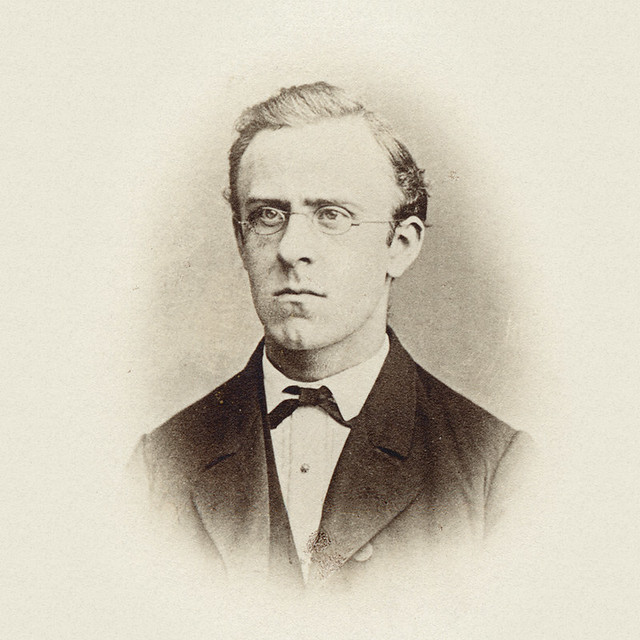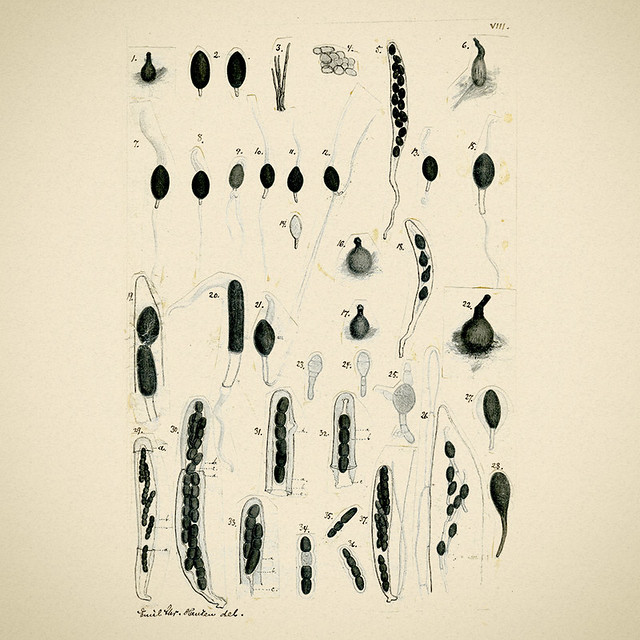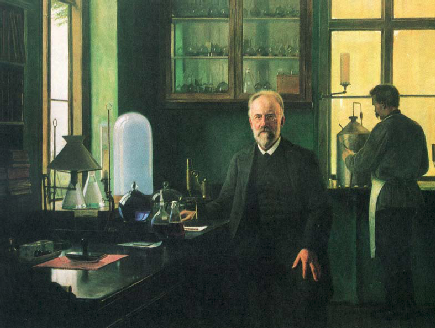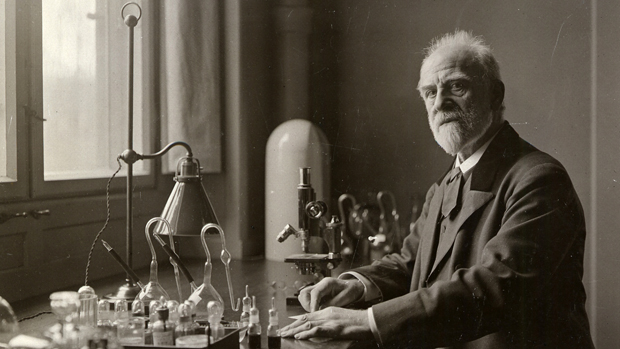
Today is the birthday of Emil Christian Hansen (May 8, 1842-August 27, 1909). Hansen was a “Danish botanist who revolutionized beer-making through development of new ways to culture yeast. Born poor in Ribe, Denmark, he financed his education by writing novels. Though he never reached an M.Sc., in 1876, he received a gold medal for an essay on fungi, entitled “De danske Gjødningssvampe.” In 1879, he became superintendent of the Carlsberg breweries. In 1883, he successfully developed a cultivated yeast that revolutionized beer-making around the world, because Hansen by refusing to patent his method made it freely available to other brewers. He also proved there are different species of yeast. Hansen separated two species: Saccharomyces cerevisiae, an over-yeast (floating on the surface of the fermenting beer) and Saccharomyces carlsbergensis, an under-yeast (laying on the bottom of the liquid).

Here’s his entry from Encyclopedia Britannica:
Danish botanist who revolutionized the brewing industry by his discovery of a new method of cultivating pure strains of yeast.
Hansen, who began his working life as a journeyman house painter, received a Ph.D. in 1877 from the University of Copenhagen. Two years later he was appointed head of the physiology department at the Carlsberg Laboratory in Copenhagen, where he remained until his death. His research was concerned mainly with yeasts that convert carbohydrates to alcohol, and in 1888 he published an article that described his method for obtaining pure cultures of yeast. The yeast grown from these single strains was widely adopted in the bottom-fermentation brewing industries. Further investigations led him to the discovery of a number of species of yeast. He defined the characters of the different species and devised a system of classification. After further study he devised additional methods for the culture and isolation of certain species.

Emil Hansen as a young man.
This is how Carlsberg describes Hansen’s breakthrough in 1883:
The Carlsberg Laboratory made its first major scientific breakthrough when Dr. Emil Chr. Hansen developed a method for propagating pure yeast.
Fluctuations in the beer quality were not unknown at the time, but had until then been solved by thorough cleaning of all installations after suspension of production. If a brew failed, there was no use in pasteurising it; it had to be destroyed.
In 1883, the Old Carlsberg beer got infected with the beer disease and all efforts were made to find a solution to the problem.
Dr. Emil Chr. Hansen who joined the Carlsberg Laboratory in 1878 was examining the beer, and he found that it contained wild yeast. Through his studies and analyses, he discovered that only a few types of yeast (the pure yeast) are suitable for brewing, and he developed a technique to separate the pure yeast from the wild yeast cells. The problem had been solved, and the new Carlsberg yeast – Saccharomyces Carlsbergensis – was applied in the brewing process.
The propagating method revolutionised the brewing industry. Rather than to patent the process, Carlsberg published it with a detailed explanation so that anyone could build propagation equipment and use the method. Samples of the yeast – Saccharomyces Carlsbergensis – were sent to breweries around the world by request and young brewers came to Carlsberg to learn the skills.

This is the entry from Wikipedia on the history of Saccharomyces Carlsbergensis:
So-called bottom fermenting strains of brewing yeast were described as early as the 14th century in Nuremberg and have remained an indispensable part of both Franconian and Bavarian brewing culture in southern Germany through modern times. During the explosion of scientific mycological studies in the 19th century, the yeast responsible for producing these so-called “bottom fermentations” was finally given a taxonomical classification, Saccharomyces pastorianus, by the German Max Reess in 1870.
In 1883 the Dane Emil Hansen published the findings of his research at the Carlsberg brewery in Copenhagen and described the isolation of a favourable pure yeast culture that he labeled “Unterhefe Nr. I” (bottom-fermenting yeast no. 1), a culture that he identified as identical to the sample originally donated to Carlsberg in 1845 by the Spaten Brewery of Munich. This yeast soon went into industrial production in Copenhagen in 1884 as Carlberg yeast no. 1.
In 1904 Hansen published an important body of work where he reclassified the separate yeasts he worked with in terms of species, rather than as races or strains of the same species as he had previously done. Here Hansen classified a separate species of yeast isolated from the Carlsberg brewery as S. pastorianus, a name derived from and attributed to Reess 1870. This strain was admitted to the Centraalbureau voor Schimmelcultures (CBS) in 1935 as strain CBS 1538, Saccharomyces pastorianus Reess ex Hansen 1904. In a further publication in 1908, Hansen reclassified the original “Unterhefe Nr. I” as the new species Saccharomyces carlsbergensis and another yeast “Unterhefe Nr. II” as the new species Saccharomyces monacensis. The taxonomy was attributed to Hansen 1908 and the yeasts entered into the Centraalbureau voor Schimmelcultures in 1947 as CBS 1513 and CBS 1503 respectively.
Since the early 1900s, bottom-fermenting strains of brewery yeast have been typically classified as S. carlbergensis in scientific literature, and the earlier valid name assigned to a bottom-fermenting yeast by Reess in 1870 was rejected without merit. This situation was rectified using DNA-DNA reallocation techniques in 1985 when Vaughan-Martini & Kurtzman returned the species name to S. pastorianus under the type strain CBS 1538 and relegated the two former species assigned by Hansen in 1908, S. carlsbergensis CBS 1513 and S. monacensis CBS 1503, to the status of synonyms. These experiments also clearly revealed the hybrid nature of the lager brewing yeast species for the first time, even though one of the parental species was incorrectly classified in retrospect. Nonetheless, over the last decades of the 20th century, debate continued in scientific literature regarding the correct taxon, with authors using both names interchangeably to describe lager yeast.

Although most accounts mention that he wrote novels to put himself through school, one has a slightly different take, though I’m not sure how true it is. “Emil earned his bread and butter as a painter but he yearned for another life and left Ribe so he could study. He graduated from High School relatively late – he was 29 years old.”
 Emil Christian Hansen, taken in 1908, a year before his death.
Emil Christian Hansen, taken in 1908, a year before his death.